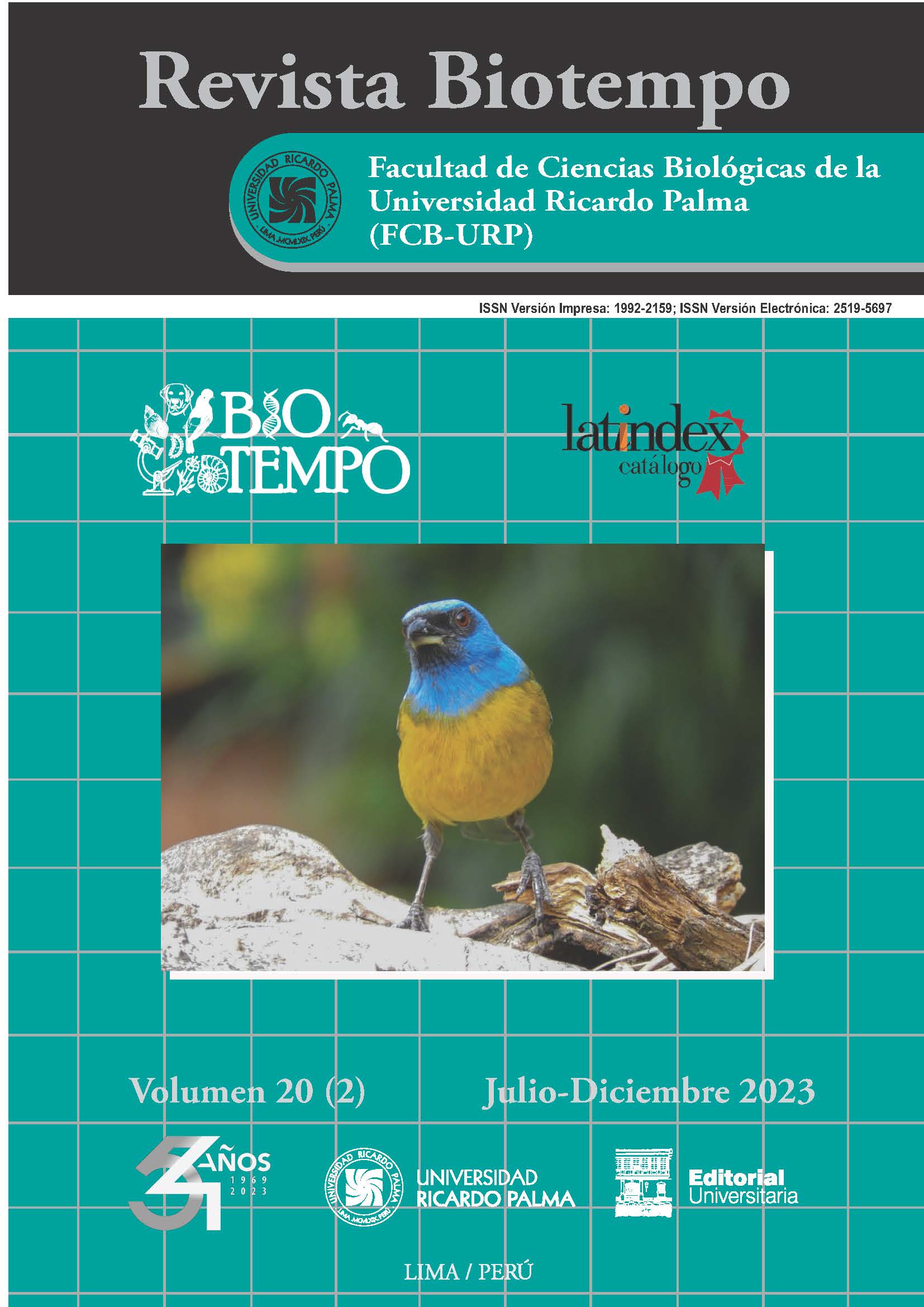Antioxidant capacity of the pulp of Vasconcellea candicans "mito"
DOI:
https://doi.org/10.31381/biotempo.v20i2.5872Keywords:
“mito”, Vasconcellea candicans, polyphenols, ripe and immature fruit, antioxidant capacity, IC50Abstract
Due to the antioxidant potential of the fruits of the "mito" (Vasconcellea candicans, (A. Gray) A. DC 1864) and the possibility of being used as a natural additive in the food industry, we aim to evaluate the concentration of polyphenols, the antioxidant capacity and the mean inhibitory concentration (IC50) of the pulp of this fruit in two stages of maturity and in two extracts, aqueous and ethanolic at 70% (ethanol 70: water 30). We determined the concentration of total polyphenols, the antioxidant capacity as % of free radical capture and the inhibition coefficient (IC50). Our results indicate that the aqueous extract of the pulp of the fruits of immature myth has the highest concentration of total polyphenols, while the antioxidant capacity was higher in ethanolic extracts, these being higher than those found in papaya. The IC50 was higher in the mature ethanolic extract of mito vs. papaya. We found no correlation between total polyphenols, antioxidant capacity and IC50. We conclude that the state of maturity influences the concentration of total polyphenols, while the capture of free radicals and coefficient of IC50, varies according to the type of extractant used, demonstrating that the pulp of "mito" is a promising source to use as a natural antioxidant.










